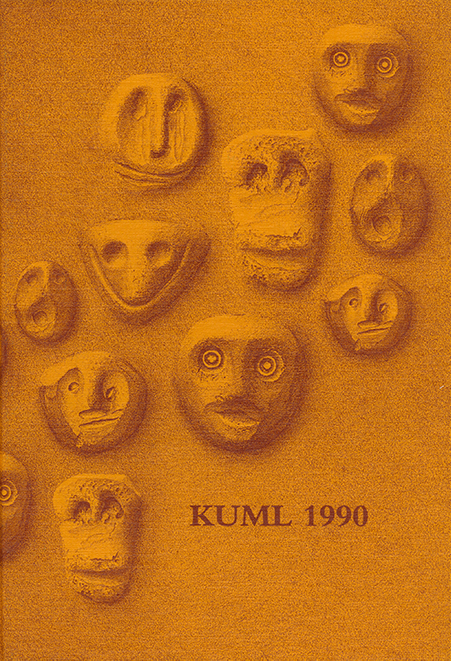Clay heads and faces from the early Iron Age
DOI:
https://doi.org/10.7146/kuml.v37i37.111168Keywords:
Heads, faces, clay, early iron age, clay heads, clay facesAbstract
Clay heads and faces from the Early Iron Age
The Early Iron Age is one of the prehistoric periods when a more or less geometrical type of ornament dominated. Pictorial representation on the other band is common in the Late Bronze Age, where it occurs as terminals on knife handles and in other places. Finds from recent years have shown, however, that perhaps there are more pictures from the Early Iron Age than earlier presumed, and this is without counting imports from continental and Mediterranean areas.
In this article only anthropomorphic representations are dealt with. They appear in various forms -as "busts", relief masks, or full figures. Dotted or incised figures are very rare.
Five examples of busts are known, which all seem to be male. They are all from settlement sites datable to the centuries around the birth of Christ.
Artistically they are very different from one another, but all have a kind of life over them. In contrast with them are the faces in relief, of which nine are now known in Denmark and southern Norway. They are modelled on the knobs of lugs or handles, and nearly all have a very stereotyped character. They are normally rounded oval in shape with strikingly large, staring eyes. In a pair of cases however the faces are rich in detail -the heads from Grønninghoved and Bredsten (figs. 8 and 9), which both are from settlements, whereas the other masks were on eating or drinking vessels from graves of the Early Roman Iron Age. One case of a complete figure is known from Denmark in the well known frieze of horsemen from a pot found in a grave at Kraghede and dated to the end of the Pre-Roman Iron Age. In this case the figures were dotted in outline. In N and NW Germany complete figures are somewhat commoner, and they are usually in relief (fig. 11). They are found on pottery from graves, and are generally without details, while the praying position of the arms is characteristic. They are dated to the Late Roman and beginning of the Migration period.
The various anthropomorphic representations undoubtedly played a part in ritual and ideology, even if certain "busts" are so detailed chat they could easily represent individual persons. It is worth noting chat these unpretentious figures have not yet been found in the normal ritual deposits. "Busts" have only been found at settlements, and masks are commonest in graves. The last suggests chat they belong to a ritual sphere of their own.
Human representations in the familiar ritual deposits are quite impersonal in character, but much has been done to emphasize the sexual character. It should also be mentioned that these representations are commonly found as pairs of deities (fig.14 and 15). There is a kind of uniformity over this group of finds which points in the direction of cultic affinity over a wide area. The little masks and "busts" on the other hand are more local in character, and seem more probably to express the local ritual individuality.
Jørgen Lund
Downloads
Published
How to Cite
Issue
Section
License
Fra og med årgang 2022 er artikler udgivet i Kuml med en licens fra Creative Commons (CC BY-NC-SA 4.0).
Alle tidligere årgange af tidsskriftet er ikke udgivet med en licens fra Creative Commons.


